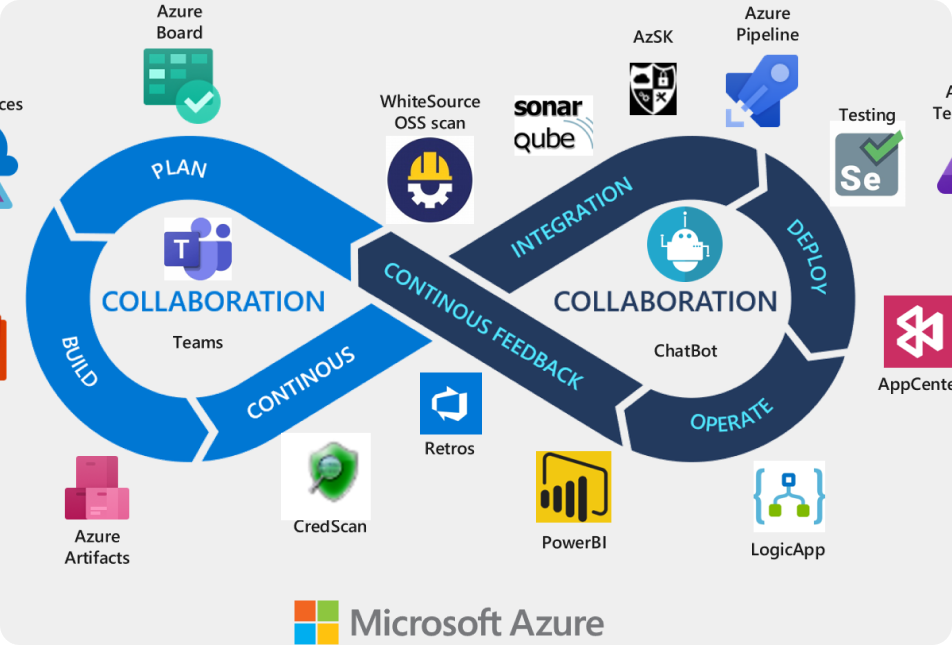DevOps has seen unbelievable growth across organizations in an exceedingly very short time. five-hundredths of organizations have enforced DevOps, and the 27% going to implement it within the next year. like any important changes from traditional development workflows, DevOps brings edges furthermore as challenges. For your organization to succeed with DevOps, you’ll need to consider these potential issues and prepare accordingly.
01Focus on Legacy Apps and Systems
The first challenge faced by DevOps groups involves facing legacy applications that were designed while not keeping DevOps in mind. This may appear harmless, however, it’s pretty difficult for the transition. you wish to take care of these legacy systems though you target new apps and systems with DevOps.
There are different reasons for transitioning with legacy applications. within the starting, you wish to figure on phasing them out altogether or bit by bit swiftness down the transitioning customers to a replacement version that’s maintained with a DevOps system. Otherwise, you’ll attempt to produce a replacement system for maintaining your legacy apps which is able to not interfere together with your DevOps system. you’ll conjointly use a Scala Performance activity tool like AppOptics which may facilitate to terminate non-DevOps systems within the forthcoming years.
02To much Tool-centric Transition
Since we are already discussing the tool; Another major issue that arises with new technology is the excessive focus on newer, more powerful software and systems. These systems need to be introduced properly to employees, vetoed for any security issues and adapted to create the right harmony between existing infrastructure, or even new ones.
All of the above takes away from the human aspect of DevOps implementation, which means that teams are not as solidly integrated as technology.
03Resistance to change
The move for DevOps will be scary for the majority of team members and key stakeholders. Compiling this as an evolution of current development practices rather than a revolution would help that problem. Telling people to change can be seen as a bad response to the person seeking advice. DevOps change doesn’t happen overnight; It should be soft and gradual. This will allow everyone to slowly adopt the DevOps culture and realize the different ways they can contribute to the development process. To redesign DevOps practices, it is a good idea to find a small product or full-layer piece of an existing application. Once teams are able to see the benefits of being in the process, other teams naturally want to adopt new ways of doing things. This will ease the familiarity of the unfamiliar, and make everyone on board the ship enter the new world of DevOps.
04No Initial Focus on Analytics
Very rarely do we see that teams incorporate analytics into their decision-making process. This is also currently true for DevOps-oriented teams, who rely on their collaborative skills, automated systems, and algorithm-based deployments to deliver results. One of the key driving behind organizational success, regardless of the implementation of DevOps, is recognizing analytics data and converting it into efficient development, bringing back a better product.
Lack of a solid, reliable analytics platform will cause enterprises to lose their hold on the market, along with their growth, which is competitive for DevOps adoption as the bottom line matters after everyone is told and done.
05Performance Testing
One thing that does not change is the need for extensive testing because user expectations are leveled. Thanks to DevOps, you can now create and publish products quickly, and don’t buy.
DevOps is great at many things, but it also has some limitations when it comes to bugs. Fortunately, there are many tools like Tridentis and Zephyr that can help you ensure the best performance of the products you release.
06Culture
As you know and “culture” plays a major role in any technical implementation. The traditional way of working makes people very comfortable. When the team is on-demand, there is resistance to move towards DevOps implementation.
07Select the Right Projects
For a new DevOps team, it may seem smart to choose DevOps for every new project, but not all the time. DevOps is not mandatory because sometimes it can slow down the entire production process if it is not implemented properly. So you must be diligent when choosing projects to use DevOps. When it comes to wondering whether DevOps is necessary or not, it is best to remember that DevOps is an operational strategy that will not be the right fit at all times.
If you are working to scale your software faster and get more speed from its agility, DevOps is a smart choice. Furthermore, DevOps does not work all the time and therefore it should not be considered as a solution that will solve all your problems. For example, if you are using an older system, it is better to stick to old methods and processes because it is not possible to find automated systems for these all the time.
In addition, planning and designing work is seen as a poor fit for DevOps as they go through designing and UX is a more successful way to adopt the process rather than continuous improvement.
08Facing the Cost of DevOps
Increasing revenue does not reduce DevOps costs. A faster release cycle means more value is added to your product, resulting in average revenue of 19%. But the initial cost of introducing new technologies, training employees, and migrating older systems can be considerable, and when the benefits are not immediately realized, it is easy to discourage.
09 Budget
A turnkey project for DevOps Implementation would be a very tough ask. Lets us agree on the fact that there will always be challenges. Unforeseen risk will be there to mitigate. This is not because of planning or understanding. But because of the fact, every implementation is unique in it is own way. A very small network or application component could make the DevOps Implementation tougher. Budgeting with better buffer could always help.
10Moving from legacy infrastructure to microservices
Outdated infrastructure and applications can be problematic, even if it has served the company for years. Staying on the legacy infrastructure can highlight the problem of stability, lack of support and the fact that you will be left behind in the race to move fast. The use of Infrastructure-A-Code together with microsystems is another step towards the future of continuous innovation. It modifies the life cycle of development to adapt to changing markets and customer needs. If a company does not remain innovative, it will be quickly replaced by something else it offers, no matter how popular that company is. Replacing or modifying old, monolithic applications with the new Microservices architecture allows FlugGates to be opened for faster development and faster innovation.









